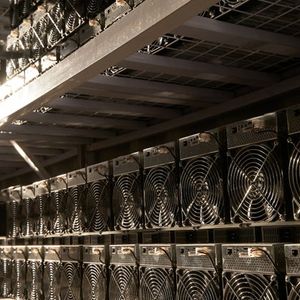
Summary Bitfarms generates approximately $8 million in monthly free cash flow from 17.7 EH/s Bitcoin mining operations. The company is developing a 350 MW HPC campus at Panther Creek, with 50 MW online by late 2026. Bitfarms holds $230 million in cash and Bitcoin, plus access to a $300 million Macquarie credit facility. Washington’s 18 MW hydro-powered site can convert to HPC without regulatory approval at electricity costs under $30/MWh. Current EV is roughly $2.2 billion, yet no AI compute revenue is reflected in valuation multiples. Investment Thesis Bitfarms Ltd. ( BITF ) is growing out of traditional Bitcoin USD ( BTC-USD ) mining and into the business of operating energy-powered AI infrastructure. Its self-sustaining business model, liquid balance of $230 million, and line of credit with Macquarie for another $300 million provide the capital to develop 350 MWs of high-performance computing (HPC) capacity in North America. With 17.7 EH/s of Bitcoin mining hash rate churning out $8 million per month in free cash flow, they have a stable Bitcoin business to finance the transition to computing. As the world's energy grid is reshaped to satisfy the needs of AI demand, their energy infrastructure in Pennsylvania, Washington, and Quebec puts them poised to profit on the next world scarce resource of computing. It is still valued as a miner. The Quarter That Redefines Bitfarms It is now time to focus on upcoming Q3 2025 results due out on November 13 with analysts expecting $84.7 million in revenue (+88.8% YoY) and EPS of -$0.02. Results should highlight strong mining cash flow (~$8 million per month) and improved efficiency after the Argentina shutdown, which lifted fleet performance to 17 W/TH. With Bitcoin averaging $110K–$120K during the quarter, mining margins likely held above 40%, reinforcing Bitfarms’ self-funded model and providing liquidity to advance its US HPC expansion at Panther Creek and Washington. This self-sufficiency is just what sets apart companies such as Bitfarms from others such as Core Scientific, Inc. ( CORZ ) or CleanSpark, Inc. ( CLSK ), which have to resort to equity offerings or debt with predetermined terms. The message conveyed to the market through this self-sufficiency is evident in the buyback plan for up to 49.9 million shares , 10% of which has already been done. Statements made by CFO Jeff Lucas during the Q2 earnings call reinforced the message that there is no extra capital expenditure beyond the budgeted amount of $10 million in 2025 necessary for their mining business. This optionality revolves around Pennsylvania. The Panther Creek campus , with approved 350 MW of HPC computing capacity, is the beginning or cornerstone of this change. As it stands, it is situated at the center of the new AI corridor with investments of tens of billions of dollars in data centers by Amazon, CoreWeave, Google, and Meta. Its quick entry into grid connectivity and association with T5 Data Centers, a developer for each hyperscale firm, lend it credibility in such a realm because execution and timeliness have high stakes. The first 50MW will be commissioned in late 2026 with the first capital facility financed by Macquarie, and 300 MW will be commissioned in 2027. Q2 2025 Earnings Presentation The Second Engine: From Hydro to Hyperscale A second lever is introduced with the Washington site, which is a smaller 18MW hydro-powered site. Its conversion to HPC does not require approval, and its economics in terms of electricity rate at less than $30 per megawatt-hour is one of the lowest in North America. For business workloads, lower marginal usage at this location could fuel the second business model at Panther Creek. These efforts could generate $12 to 15 million ARR per year related to powered shell leases in 2026 and over $100 million as usage escalates. The proposed re-domicile in the USA by 2026 reinforces the transformation of its business position away from a crypto proxy and towards an infrastructure business. The adoption of US GAAP accounting for FY2025 will ensure normalization of accounting and improve comparability with rivals in the AI infrastructure market. This will also pave the way for listing in US market indices and the attraction of lower-cost capital. By then, more than 80% of the firm's capacity will be in the USA with their Quebec assets and 170MW hydro electricity will be left as a longer-term regulatory option. Conversion of crypto megawatts to data center capacity if approved by the province would then place them as one of Canada's largest HPC providers. Management’s Discussion For the short-term future, it is anticipated that Q3 will reflect continued free cash flows driven by mining activities, low capital outlays, and improving liquidity. More importantly, the report should mark a visible transition narrative, from hashrate to compute capacity. Historically, markets discount miners that diversify, but AI demand is overwhelming traditional power and data center supply. Revenue per megawatt in AI compute is materially higher, often five to ten times greater than Bitcoin mining, and power, not silicon, is now the true bottleneck. The Hidden Multiple: Valuing Bitfarms Beyond Mining Bitfarms is still well short of its intrinsic value. At a market capitalization of approximately $2.2 billion, it is still at 7x forward revenue and 3.4x book value. Even at this multiple, there is no reflection of the effect of the HPC transition. This is because the firm's assets, capital structure, and execution plan are similar to those of their AI infrastructure peers, which trade at more than 15x P/S. Data by YCharts If Panther Creek’s first 50 MW phase produces even $50 million in EBITDA by 2026, and the market applies a 15x infrastructure multiple, that alone adds roughly $750 million in EV. Combined with Bitfarms’ current ~$2.2 billion EV, the total would approach $3 billion, about 36% above today’s valuation. That implies a share price in the $5-6 range. Hitting $6–7/share would likely require a second phase or EBITDA closer to $70–80 million. Bitfarms is cash-flow positive from mining and carries minimal debt compared to peers. As such, it provides a floor to the share price. As Iris Energy's revaluation post-contract announcement showed, execution in compute is rewarded. Once they sign their first customer for their HPC business or begin construction on their first site with their partner at T5, they will no longer be a miner but an infrastructure company. This alone could close the differences in their share price and double their stock market value. The Fragile Bridge: From Bitcoin Cycles to AI Contracts The key risks continue to be execution and macro. The execution risk revolves around the permitting timelines with interconnects and the completion of finalizing customer contracts. Delays in such execution or non-contingent customer upfronts could delay the original re-rating timelines. The short-term profitability of the business is still partially tied to Bitcoin prices, which although helping with current profitability metrics could resemble market turmoil should the crypto market turn. A potential risk related to crypto tariffs being transformed into data tariffs in Canada is still clouding the legislation. Inflationary pressure on construction and energy prices could slightly dent the bottom line at the Panther Creek site unless countered with increased lease prices. Finally, the overall competitive intensity in the AI infrastructure market is increasing. Moreover, hyperscale partnerships continue to be tough to acquire. Takeaway Bitfarms’ capital-light balance sheet and resilient power portfolio have lessened the overall risk of overextension that had plagued similar peers during past cycles. It's no longer just a Bitcoin miner; it's an energy-to-compute transformation-type stock that is selling at mining multiples. It has stable cash flows, a financed HPC pipeline, and is on the path to US reclassification. It's on the cusp of a re-rate. Just as soon as there's visibility thereon, the story needs to follow.
